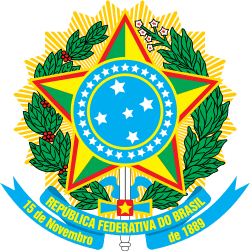Timeline of Fortaleza
The following is a timeline of the history of the city of Fortaleza, Ceará, Brazil.
This is an incomplete list that may never be able to satisfy particular standards for completeness. You can help by expanding it with reliably sourced entries.
Prior to 20th century
20th century
- 1910 - Theatro José de Alencar (theatre) opens.
- 1915 - Drought.[1]
- 1918 - Fortaleza Sporting Club founded.
- 1919 - Colégio Militar de Fortaleza established.
- 1920 - Population: 78,536
- 1928 - O Povo newspaper begins publication.[3]
- 1929 - Ceará Flying Club founded.
- 1932
- Ceará History Museum established.
- Drought.[1]
- 1933 - Ferroviário Atlético Clube (football team) formed.
- 1940 - Population: 180,901.
- 1942 - Drought.[1]
- 1946 - Regional Labor Court headquartered in city.
- 1950 - Population: 270,169.
- 1957 - Tribuna do Ceará newspaper begins publication.[3]
- 1960
- Population: 514,818.
- City plan presented by Helio Modesto.[1]
- 1962 - Pirambu shantytown rally.[1]
- 1966 - Pinto Martins – Fortaleza International Airport terminal built.
- 1970 - Population: 842,702.
- 1971 - Integrated Development Plan for the Metropolitan Region of Fortaleza presented.
- 1973 - Castelão stadium opens.
- 1974 - Shopping Center Um in business.
- 1979 - Aldeota , Cocó, Meireles , Papicu , and Varjota development begins (approximate date).[1]
- 1980
- Ceará Museum of Image and Sound established.
- Population: 1,308,919.
- 1981
- 1982
- Federacao de Bairros y Favelas de Fortaleza (community organization) founded.
- Iguatemi Fortaleza shopping center in business.
- 1989 - Cocó Park established.
- 1990 - Juraci Vieira de Magalhães becomes mayor.
- 1991
- Cearah Periferia (housing organization) established.[4]
- Population: 1,766,794.
- 1992 - Central de Artesanato do Ceará (craft center) built.
- 1993 - Hospital São Mateus established.
- 1997 - City divided into 7 administrative regions.
- 1999 - Dragão do Mar Center of Art and Culture inaugurated.
21st century
- 2005 - Luizianne Lins becomes mayor.
- 2007 - Sobrado of Dr. José Lourenço (building) restored.
- 2010 - Population: 2,452,185.[5]
- 2012 - Fortaleza Metro begins operating.
- 2013
See also
- Other cities in Brazil
References
- ↑ 1.0 1.1 1.2 1.3 1.4 1.5 1.6 1.7 Linda M. P. Gondim and Laurence Hallewell (2004). "Creating the Image of a Modern Fortaleza: Social Inequalities, Political Changes, and the Impact of Urban Design". Latin American Perspectives 31. JSTOR 3185024.
- ↑ 2.0 2.1 2.2 2.3 "Fortaleza", Encyclopaedia Britannica (11th ed.), New York, 1910, OCLC 14782424
- ↑ 3.0 3.1 "Brazil: Directory". Europa World Year Book 2003. Europa Publications. 2003. ISBN 978-1-85743-227-5.
- ↑ Yves Cabannes (1997). "From community development to housing finance: from Mutiroes to Casa Melhor in Fortaleza, Brazil". Environment and Urbanization (London: International Institute for Environment and Development) 9.
- ↑ "2010 census". Instituto Brasileiro de Geografia e Estatística. 2010. Retrieved December 2014.
- ↑ "Tear Gas Fired Outside Stadium in Brazil, but Protest Still Spreads Inside", New York Times, 19 June 2013
Further reading
- Ernst B. Filsinger (1922), "Brazil: Fortaleza", Commercial Travelers' Guide to Latin America, Washington, DC: Government Printing Office
External links
 |
Wikimedia Commons has media related to Fortaleza. |
